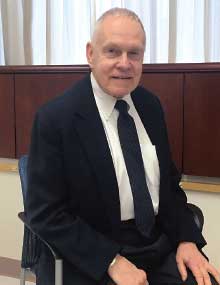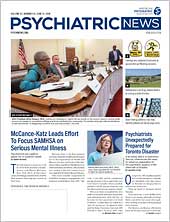The makers of take-home products to reverse opioid overdose—Adapt Pharma Inc. and Kalȳo—pledged to donate a total of 30,000 doses of their naloxone products to substance use treatment facilities. The companies announced their intention in April, but as of press time delivery details had not yet been finalized.
Meanwhile, Senate leaders turned up the heat over price hikes of naloxone products. At a congressional hearing in April on the federal government’s response to the opioid epidemic, Sen. Claire McCaskill (D-Mo.) demanded that the administration formally seek an explanation for Adapt’s and Kalȳo’s massive price increases for their naloxone products, said McCaskill, who is the ranking Democrat on the Homeland Security and Governmental Affairs Committee, at the Senate hearing. The price for Narcan intranasal retails for $135, more than double its average price of a few years ago, and Kalȳo’s Evzio auto-injector retails for $4,500, more than 6.5 times its $690 average price tag in 2014.
The two medications are the only FDA-approved naloxone products intended for lay use. Adapt officials said they will donate 20,000 doses of its intranasal naloxone Narcan, while Kalȳo will donate 10,000 of its Evzio auto-injectors. The distribution of the medication is being handled by the National Council for Behavioral Health (NCBH), and the donations will be made directly to NCBH members that provide residential substance use treatment. As of May 29, Adapt and Kalȳo were still coordinating details of the delivery of the medication and the dates when delivery will occur, the companies informed Psychiatric News via email. The plan is that inpatients will receive two doses each upon discharge.
Surgeon General Jerome Adams, M.D., M.P.H., called the donations an important step in getting naloxone into the hands of people most in need. “People with opioid use disorder are at highest risk for overdose within 30 days of completing treatment, particularly if they are not receiving medication to support their recovery,” Adams said in a statement. An estimated 2.1 million people in the United States struggle with opioid use disorder, and more than 42,000 people died from an opioid overdose in 2016, according to the Department of Health and Human Services (HHS).
At the Senate hearing, McCaskill pointed out that naloxone was approved by the FDA 47 years ago and asserted that the price hikes were not driven by research and development costs. “They’re driven by greed, pure and unadulterated greed,” she said.
The costly brand-name formulations sold in drugstores for use in the community are not the generic ones predominantly purchased by first responders and government programs, countered physician and U.S. Public Health Service Adm. Brett P. Giroir, assistant secretary for health at HHS. Rather, they typically buy the generic form of naloxone, which costs $75 for two doses, he testified. But people who are overdosing may need the drug before first responders arrive, said McCaskill.
It is not just the naloxone devices for lay people whose prices have been hiked. Hospira raised the retail price of its most popular naloxone product more than 129 percent between 2012 and 2016, according to a New England Journal of Medicine article. Amphastar, the only maker of the 1 mg per milliliter vial, nearly doubled its price between 2015 and 2016.
Kalȳo told Psychiatric News via email it raised the list price of its Evzio auto-injectors to $4,100 in 2016 so it could launch a new access program. “Too many patients were not able to obtain this medication even when their doctors prescribed it,” explained Mark Herzog, Kalȳo’s vice president of corporate affairs. The higher price allows Kalȳo to absorb the costs of providing it free or at a reduced price to patients facing financial hardship. For example, patients with no commercial or government insurance with household incomes less than $100,000 can receive Evzio free, he added.
John Renner Jr., M.D., a professor of psychiatry at Boston University School of Medicine and vice chair of APA’s Council on Addiction Psychiatry, told Psychiatric News he strongly supports community distribution of naloxone and sees no down side to the effort. “It will save lives. There is adequate science to show that these drug formulations work and that nonmedical people can easily be trained to use them. Evidence has not shown any negative impacts—only life-saving positive results.”
However, Renner added that the drugmakers’ price hikes should be a focus of discussion. “The gross overcharging by pharma for a very inexpensive drug is a real issue.” ■
“Pharmacokinetic Properties of Intranasal and Injectable Formulations of Naloxone for Community Use: A Systematic Review“ can be accessed
here.

